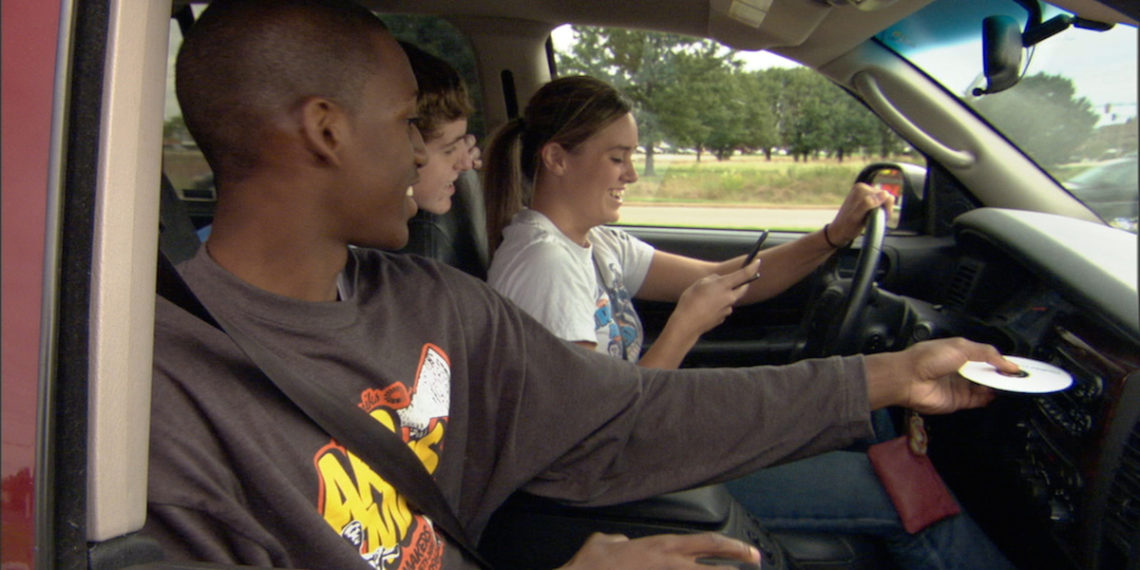
*The following is excerpted from an online article posted on PR Newswire.
Teens have been inundated with messages about the dangers of texting while driving over the past several years—and while this message is still vitally important, texting is not the only danger popping up on their smartphones. According to new research conducted by Liberty Mutual Insurance and SADD (Students Against Destructive Decisions), while 27 percent of teens today still report texting and driving, a bigger concern is that two out of three teens (68 percent) admit to using apps while driving. In fact, when asked to rank the driving behaviors they perceived to be most dangerous, looking at or posting to social media apps ranked much lower as compared to texting and driving or driving under the influence of alcohol, for example.
To complement the more traditional, quantitative research, the study also incorporated implicit association testing (IAT), which has been used for the past 20 years to measure unconscious bias. This method provided teens with a range of different visual driving scenarios such as texting, using various apps and receiving phone calls along with a set of key words. The speed with which teens associated these scenarios with words such as “distracting,” “safe,” and “fun,” among others, was then used to reveal their more automatic, gut-level reactions and feelings concerning distracted and dangerous driving behaviors. The unconscious biases identified in the IAT, coupled with the findings teens reported in the survey, reveal gaps in what teens believe versus what they say and how they act.
In many cases, teens’ reported actions didn’t match with what they implicitly felt. In the explicit, self-reporting survey, almost all teens acknowledge app usage as a danger behind the wheel (95 percent). However, when presented with a visual of an app notification appearing on a smartphone during implicit association testing, it was revealed that approximately 80 percent of teens fundamentally view app use while driving as “not distracting.”
“This research identifies teens’ underlying beliefs about key driving habits, providing insight into what teens really believe,” said Dr. Gene Beresin, senior advisor on adolescent psychiatry with SADD and Executive Director of The Clay Center for Young Healthy Minds at Massachusetts General Hospital. “Teens as a whole are saying all the right things, but implicitly believe that using their phone while driving is safe and not a stressor or distraction behind the wheel.”
Teens may consider navigation and music apps as “utilities,” diluting the perception of the dangers related to their use while driving. While 41 percent explicitly state that using navigation apps while driving is dangerous or distracting, 58 percent report using them on the road. More teens (64 percent) say that using music apps while driving is dangerous or distracting, but nearly half (46 percent) still admit to using them in the car.
While navigation and music apps may seem harmless, how teens interact with them can be distracting. Turning on music apps, changing a destination, actively checking directions and flipping through a playlist are all examples of potentially dangerous app usage behind the wheel. Implicit association testing also indicates that teens believe checking a notification or opening an app is less dangerous and distracting than texting while driving.
“Phone use while driving is one of the most concerning behaviors by inexperienced teen drivers. Any behavior that takes your eyes and focus off the road, even for mere seconds, can impair your ability to react to hazards and other vehicles,” said Dr. William Horrey, Ph.D., principal research scientist at the Liberty Mutual Insurance Research Institute for Safety. “It’s not the apps themselves that are dangerous, but how we, and our teens, interact with them while behind the wheel.”
Source: PR Newswire
http://www.prnewswire.com/news-releases/teen-driving-study-reveals-app-and-drive-is-new-danger-among-teens-new-worry-for-parents-300306198.html
Source: Homeword | homeword.com








